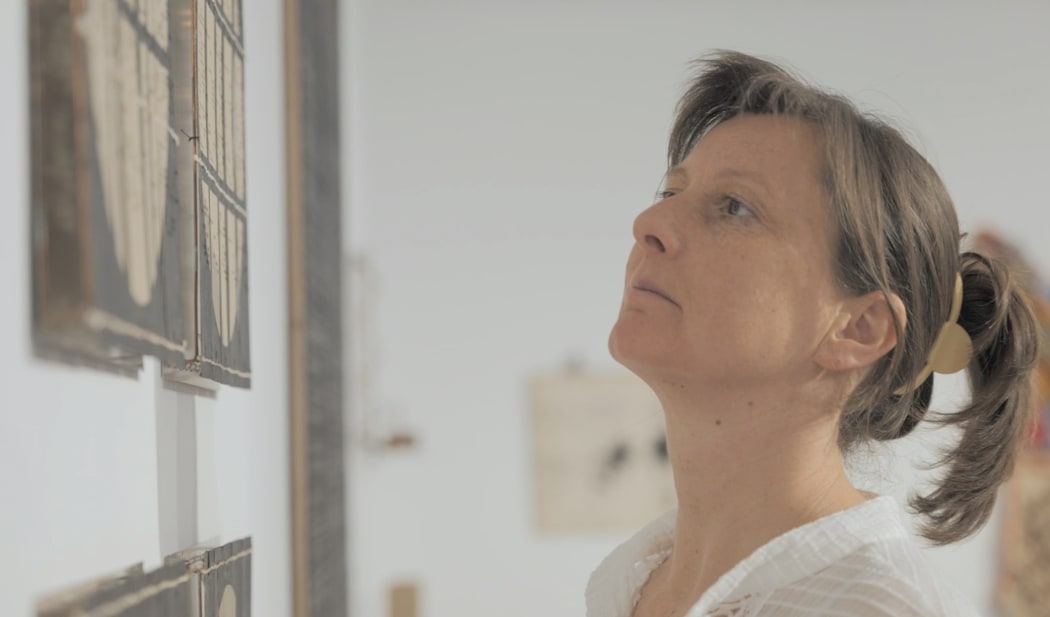
Marinda Vandenheede at Ronewa Art Projects, Berlin. Film still by Joey Bania.
On the occasion of the duo show Reclaimed at Ronewa Art Projects in Berlin, we interviewed exhibiting artist Marinda Vandenheede. For her third showcase with Ronewa, Vandenheede continues her practice of repurposing used and worn objects, creating sculptural works that instigate curiosity and find beauty in decay.
April Dell: Your works all employ found objects. Why is this your chosen medium?
Marinda Vandenheede: I indeed use recycled materials for my work, repurposing them into works of art. I'm interested in objects that contain visible layers of time - they have a past life and you can see it. It triggers the imagination. I wonder who the previous owner was, what their passions were, and why they threw or gave this item away.
I’m particularly drawn to items that are no longer perfect, that no longer live up to the standards of western society. It’s not always immediately clear to me what a specific object or material was originally used for because we have changed the way we do things and what materials we use.
I very rarely incorporate plastic items because of their chemical nature and because plastic doesn’t decay in a beautiful way. With paper, wood, or metal, the corrosion adds something.
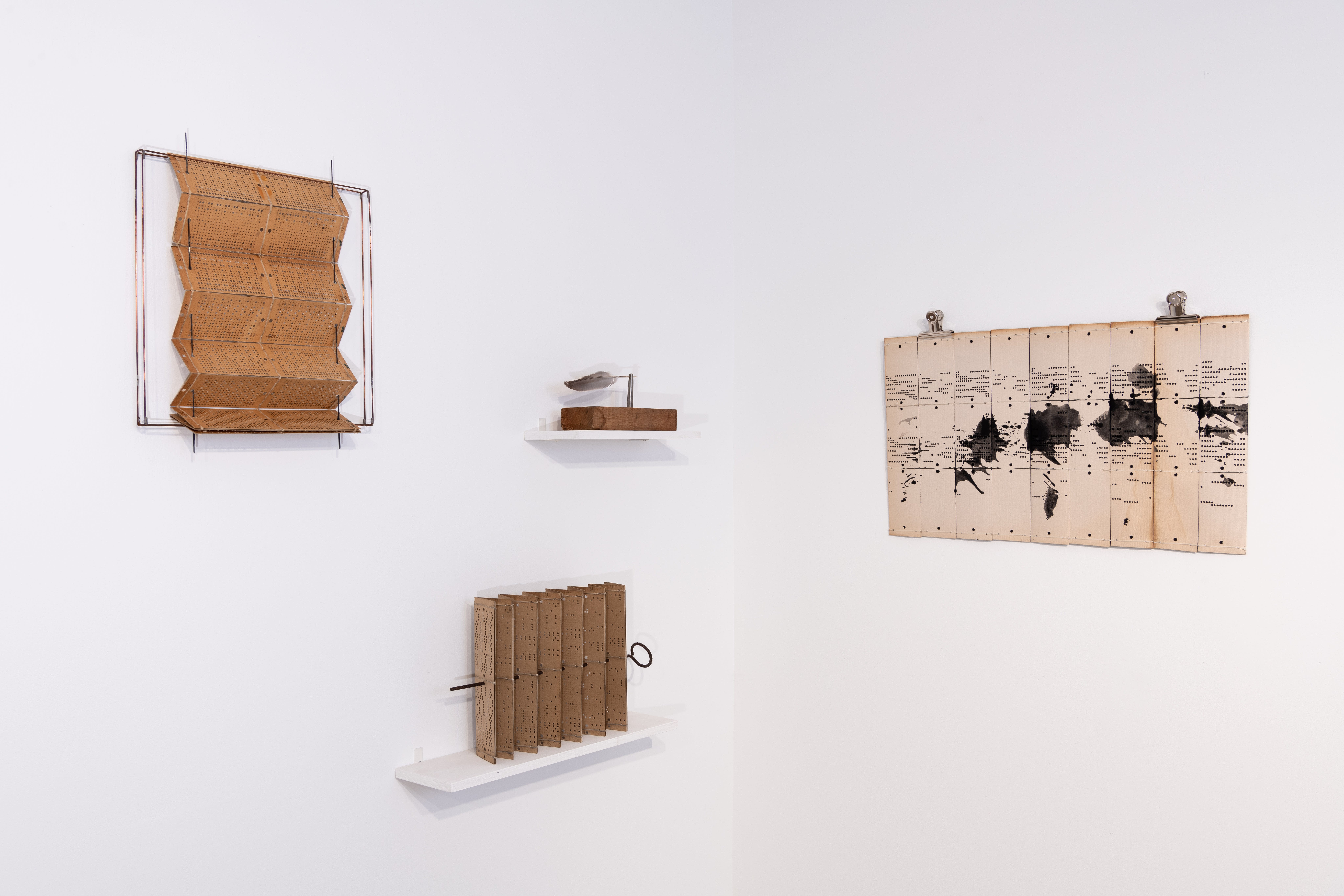
Marinda Vandenheede, installation view, Reclaimed, Ronewa Art Projects, Berlin, 2023. Photo by Jeremy Knowles.
AD: Most of the works on show in the exhibition ‘Reclaimed’ repurpose cardboard punch cards. What interests you about this particular object – firstly, as a physical material?
MV: These punch cards are sourced from the textile industry. They show wear and tear from years of use and being stored for decades in unideal conditions. Their marks, stains, creases, and the yellowing of the cardboard all tell a story.
The permeable surface created by the punched holes also interested me. Some cards have many holes, others have very few, and this semi-transparent quality directs how I use them.
The cards can be challenging to work with. Each card is tied to the next with string, and they can all move independently from each other, making it quite a fluid material. At the same time, this offers possibilities to create relief sculptures instead of only two-dimensional works.
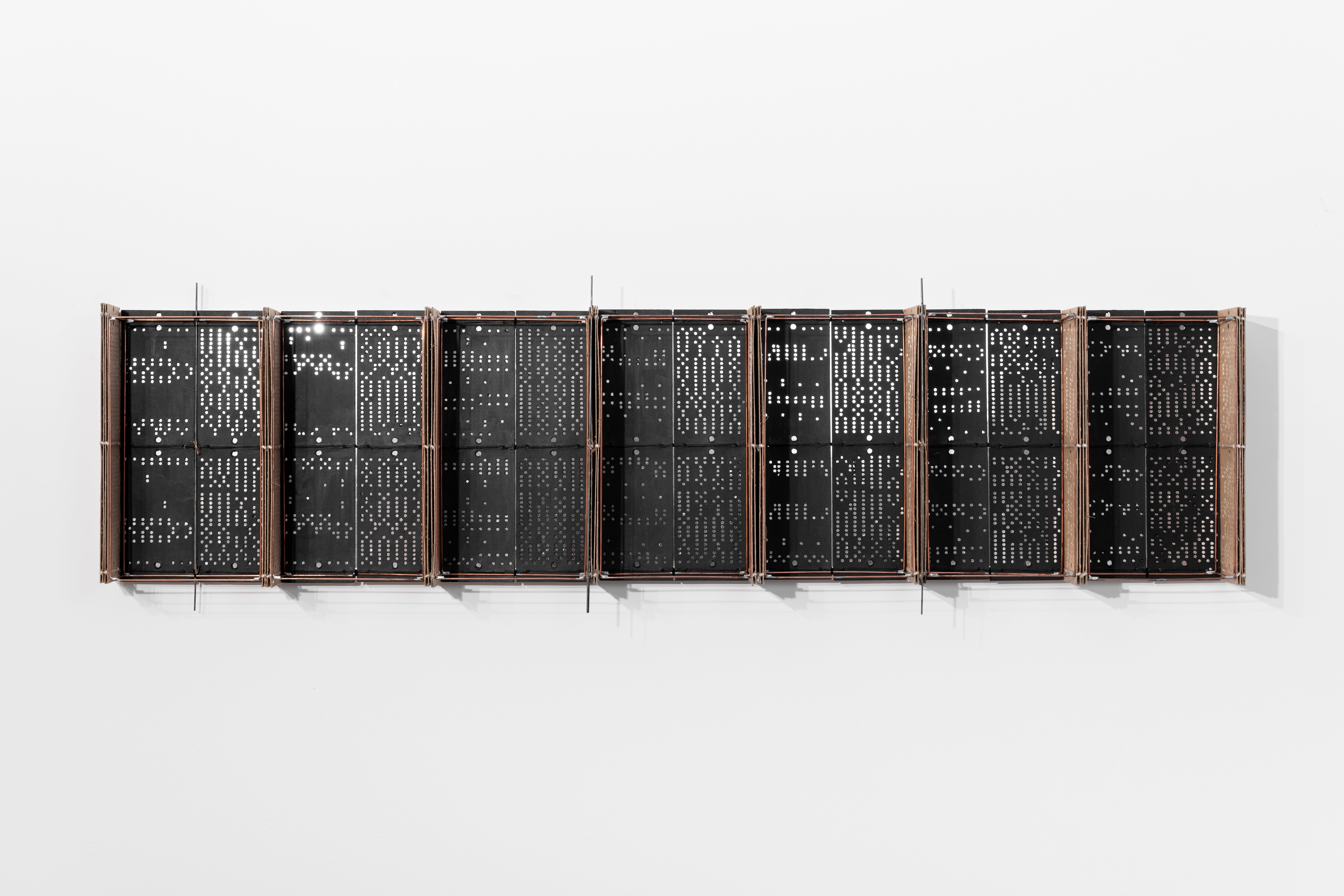
Marinda Vandenheede, 'Bigger Picture,' installation view, Reclaimed, Ronewa Art Projects, Berlin, 2023. Photo by Jeremy Knowles.
AD: What about as an artifact? How does the original purpose of the cards contribute to the works?
MV: These cards effectively jump-started the industrial revolution in the textile industry. Before, a weaver needed the skill to create a design and be able to weave it into a fabric. The weaver was a well-respected artisan. The invention of these cards separated the process of design from the physical craft of hand-weaving. Ultimately, the role of weaver was reduced to machine operator who endlessly reproduced the design embedded in the punch cards.
These cards were one of the earliest examples of binary code for programming machines. This technology eventually led to the computer and the mass digitalization of our society, with all its pros and cons. So for me, there is this conflict embedded in the material itself.
AD: You often employ symmetry, repetition, and geometry in your painted compositions and arrangements of objects, bringing a sense of order to the found objects. What does this order mean to you?
MV: I want to balance the organic quality and sensitivity of the surfaces I use and the more abstract, geometric quality of what I paint on them. This reflects the balance between nature and culture, between what is innate and what we are taught by society or in our upbringing. This is a theme that often underlies my works.
By overlaying the patterns on the cards with my own compositions, I try to reclaim a form of artistry. This choice also refers to the unconscious patterns ‘programmed’ into us by our upbringing. I want to challenge that programming and create my own patterns based on what I have experienced and learned throughout my life.
In some of the works in this exhibition, I used a reflective silver background. The work changes depending on the vantage point of the observer and the way light falls on the surface. By moving around the work, viewers are given ‘agency’ to create their own pattern, which is where the title of this series comes from.
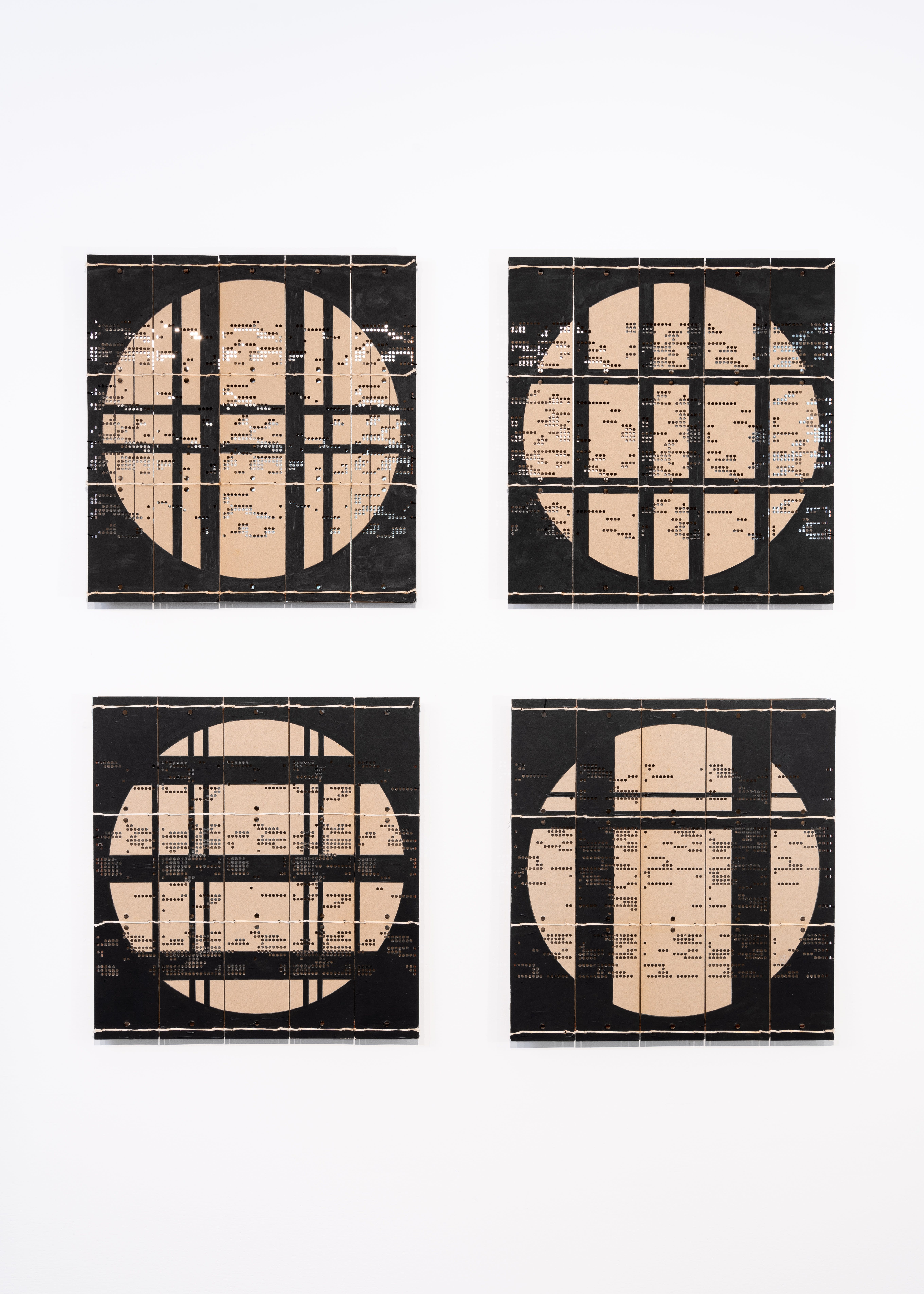
Marinda Vandenheede, 'Agency I-IV,' installation view, Reclaimed, Ronewa Art Projects, Berlin, 2023. Photo by Jeremy Knowles.
AD: Your titles often have double meanings or are tongue in cheek. Tell me about some of the other titles in this show.
MV: Through the title, I can add another layer to a work - as an element of surprise, a bit of humor, or by hinting at a personal meaning behind the work. When I get it right, the title becomes an integral part of the work and the experience of seeing it.
Another example is ‘Sign of the Times’. This work stands out because the shapes on the work are not geometric but very organic, almost random. I made this work after talking to a retired weaver, who told me they had to stop the machine as soon as oil stains appeared on the punch cards. This was a tell-tale sign that the loom urgently needed maintenance. For me, these stains are a reminder to take time, stand still, and reflect. I believe we’re surrounded by signs telling us that, as a society, we are in need of maintenance; that it’s time to stop the machines.
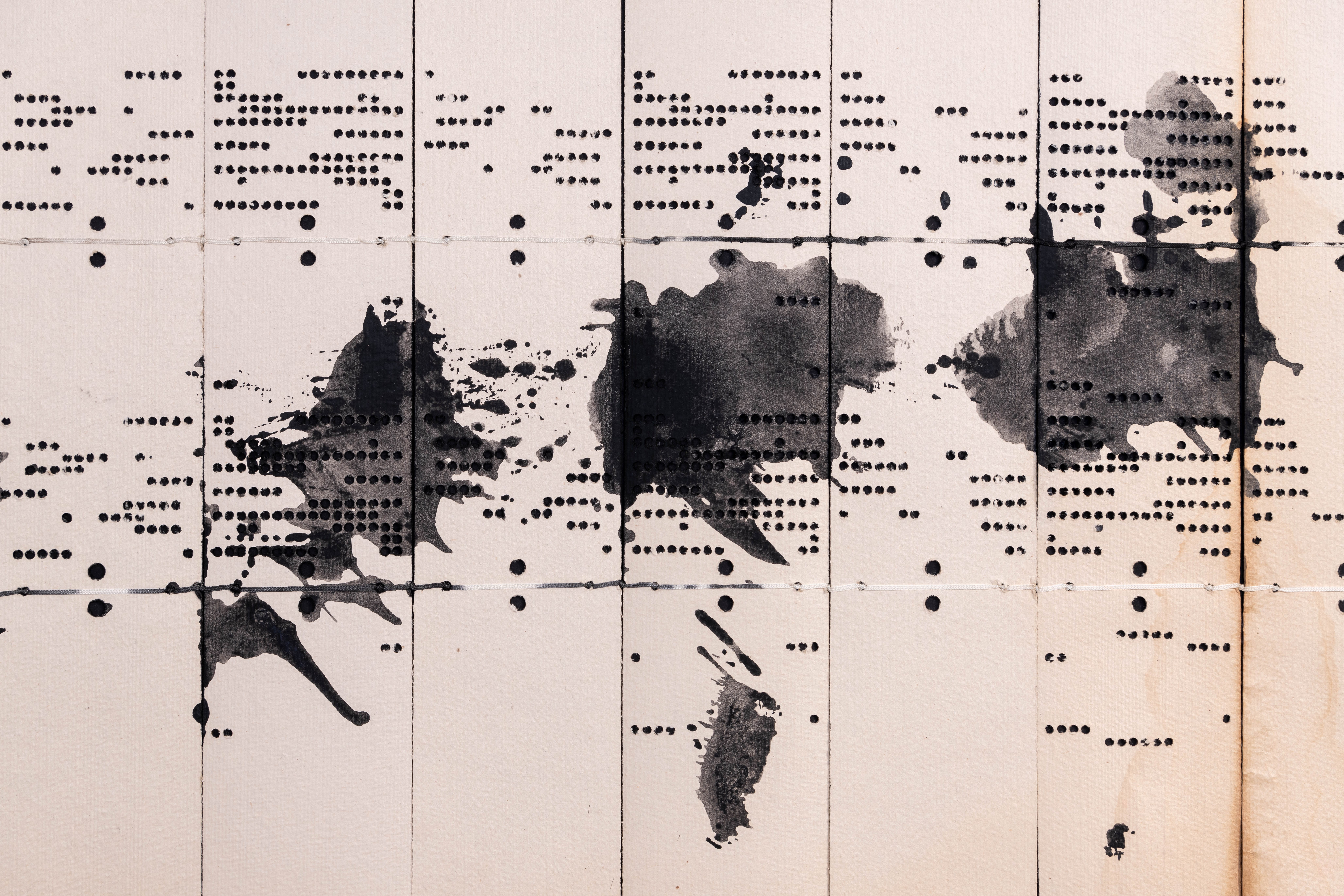
Marinda Vandenheede, 'Sign of the Times', detail view, Reclaimed, Ronewa Art Projects, Berlin, 2023. Photo by Jeremy Knowles.
‘Vicious Cycle’ has a very personal meaning to me. Because of my health conditions, I can no longer ride a bicycle, which is something I loved to do. This sculpture tells that story and conveys my frustration. It has the characteristics of a bicycle: saddle, pedals, wheels, frame. But it’s also clear you can’t ride it. Even if you could, you would only ride around in circles because the wheels aren’t aligned straight. It’s also a commentary on the world in a broader sense, running around in circles.
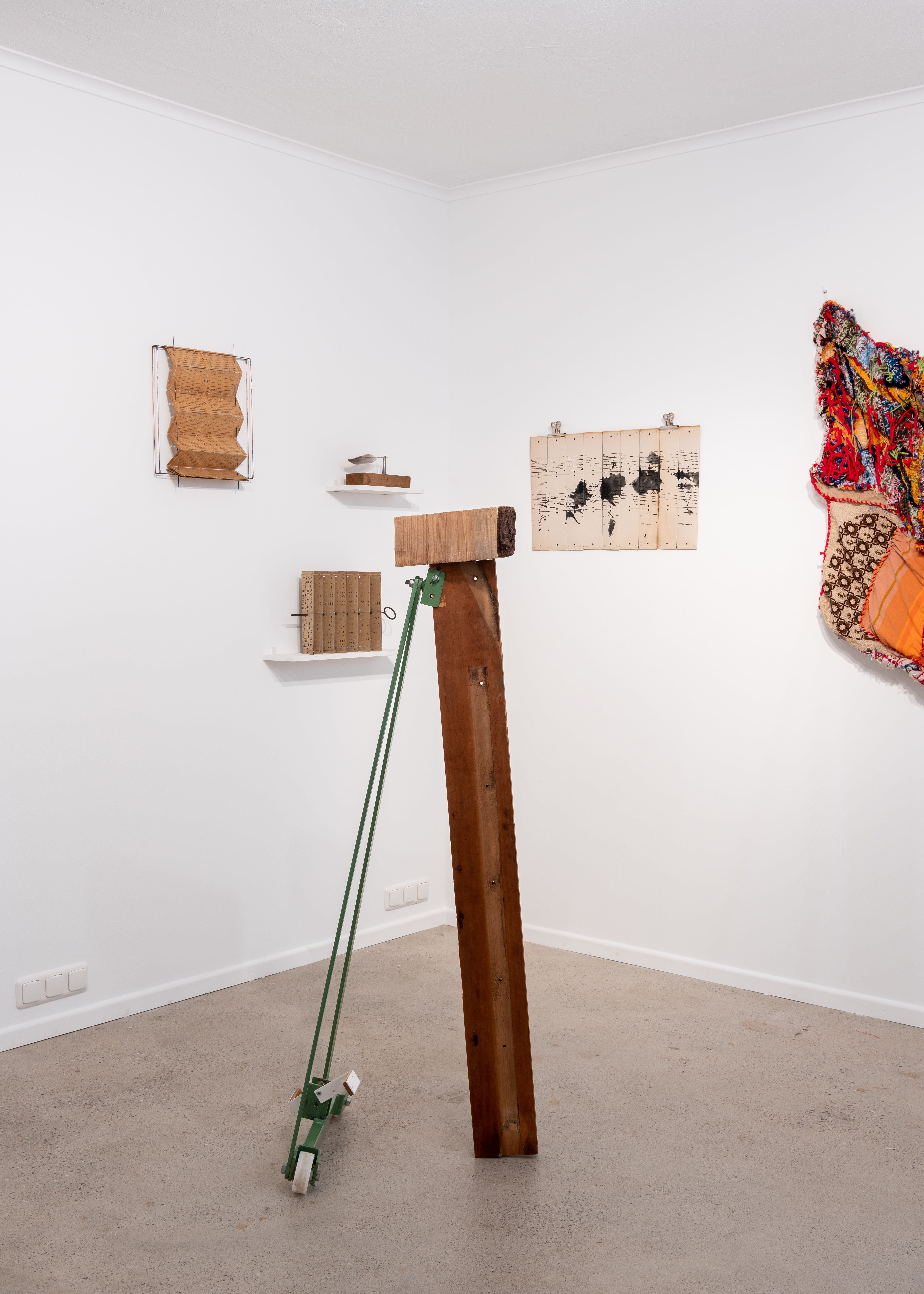
Marinda Vandenheede, 'Vicious Cycle,' Iinstallation view, Reclaimed, Ronewa Art Projects, Berlin, 2023. Photo by Jeremy Knowles.
AD: Your sculptures are playful arrangements of contrasting components. What is your inspiration and process for combining the different elements of a sculpture?
MV: When I bring objects home, I lay them out in my studio to be inspired. Some will stay out for months or years until the arrival of something else triggers an idea. I often disassemble an item and discover something new, a hidden mark or an unseen surface. It’s a tender process, and I form a bond with the object.
Another essential step in my process is walking in nature. I walk every day to cope with my health. This gives me time to be alone, to think, and be inspired. Only then am I ready to start. When an idea forms, I begin assembling pieces and finding balanced compositions, or I make subtractions by drilling holes or scratching a surface. I try not to ‘force’ things together but look for ways to make different parts fit organically. It’s an intuitive process, but not without deliberation. I work until the elements become one harmonious and synergetic whole.
Reclaimed: Marinda Vandenheede & Hyacinthe Ouattara
March 10 – April 19, 2023
March 10 – April 19, 2023
Ronewa Art Projects
Potsdamer Straße 91, 10785 Berlin
Tel: +49 30 77 37 87 30

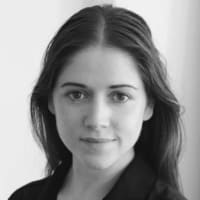
Add a comment